| |
This Colorado museum will really bug you
By Tom Adkinson
August 5, 2022
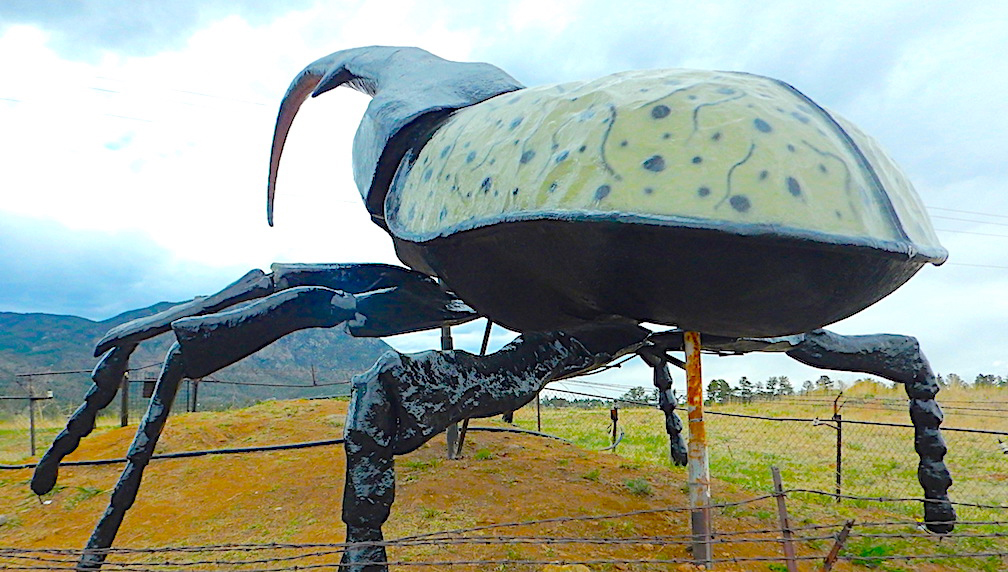
Herkimer, a giant fiberglass version of the world’s largest beetle, marks the way to the May Natural History Museum. Image by Tom Adkinson
|
COLORADO SPRINGS, Colorado – The May Natural History Museum has 7,000 bugs on display, 100,000 more creepy-crawlers tucked away in storage and a wry sense of humor.
With a straight face, the fourth generation of the bug-owning family proclaims the 70-year-old attraction is “Colorado Springs’ premier bug museum!”
No real competition in that category is evident in the Colorado Springs market or much of anyplace else. It is one of the largest private displays of tropical bugs in the world.
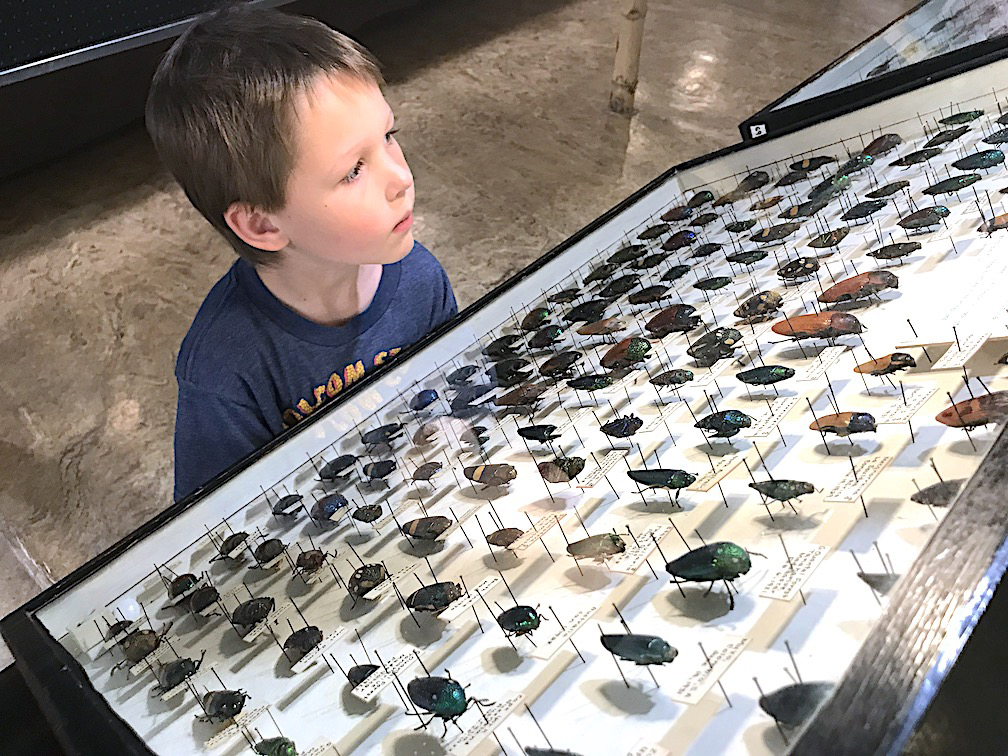
Museum displays are decidedly old school but still are fascinating. Seven thousand insect and arachnid specimens are in airtight cases. Image by Tom Adkinson
|
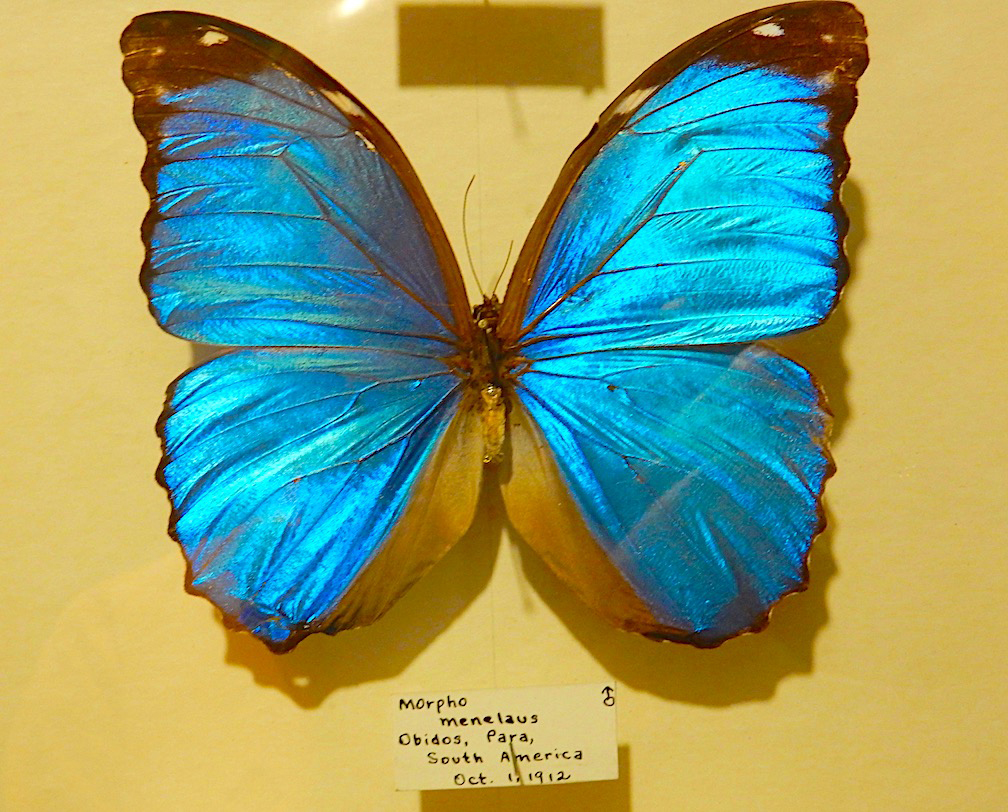
Morpho butterflies are prized for their iridescent blue wings. This specimen is from Paraguay and was collected in 1912. Image by Tom Adkinson
|
Case after airtight case is filled with exotic-looking critters. There are longhorn beetles from New Guinea collected in 1933, an iridescent blue Morpho butterfly from Paraguay collected in 1912 and a fearsome-looking Hercules rhinoceros beetle.
The West Indies Hercules beetle is one of nature’s largest (up to nine inches long and weighing half a pound) and is the inspiration for an even larger specimen that has become the museum’s calling card.
Meet Herkimer, a fiberglass creature worthy of a starring role in a sci-fi movie thriller. He stands 10 feet tall and stretches 16-foot long as he guards a hilltop at the edge of the Rocky Mountains. He’s impossible to miss as you drive down Colorado Highway 115 between Colorado Springs and Cañon.
Herkimer hatched out in 1952 and lived for a time at Weeki Wachee Springs, Florida, when the May collection had a second location. He’s been marking the turnoff to the Colorado museum for more than 60 years and got a major makeover early in 2022.
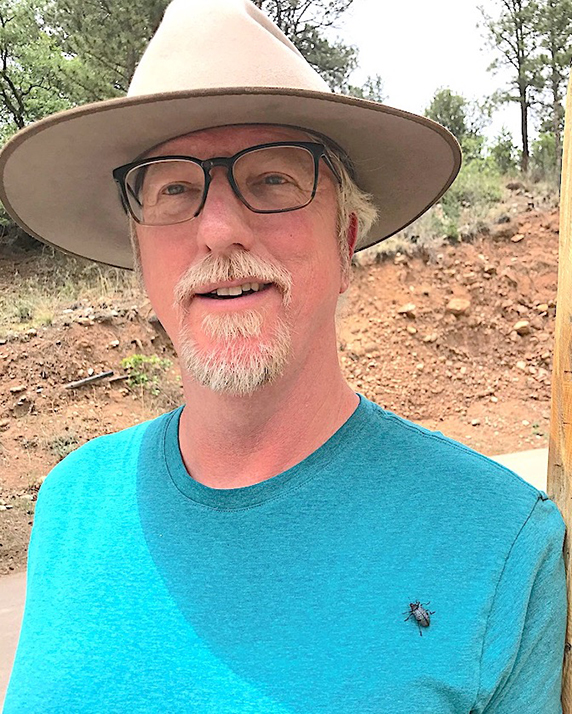
R.J. Steer, the museum president, didn’t blink an eye when a flying beetle landed on his shoulder during an interview. Image by Tom Adkinson
|
R.J. Steer, president of the museum, can quickly answer how this critter collection landed in Colorado, where the relatively temperate and dry climate suits the specimens.
The story begins in the mid-1800s with Steer’s great-grandfather, James May, an Englishman, whose father was a collector for the British Museum. Young James went with his father to Brazil. Let’s just say the collecting bug bit him. Years later, while recuperating after being wounded in the Second Boer War in South Africa, he began saving rare and exotic species himself. He netted the museum’s oldest specimen in 1898.
James moved to Canada and traded with other insect collectors around the world. Carefully wrapped and scientifically labeled insects accumulated from missionaries in Borneo, visitors to Japan, whoever had the itch to collect, share and trade.
James’s son John saw a business opportunity in the collection, and it was John who learned how to build airtight cases and had the gumption to transport the insects around the U.S. and Canada to fairs, car shows, even Madison Square Garden, as Steer tells it. Colorado became the museum’s permanent home in 1952.
“It’s a scientifically valid collection, and our mission is to bring the wonderful world of insects to the public. We believe some specimens are extinct, and some are illegal to collect now. It’s priceless because it’s unpriceable and irreplaceable,” Steer said.
The museum is definitely old school. Gooseneck lamps hang over static display cases filled with insects and arachnids (scorpions and spiders, specifically) identified on handwritten cards. No flash or sizzle, just awe and amazement – and sometimes horror.
Just what’s the right reaction to a real-life diorama of a tarantula as it captures a hummingbird?
The museum operates a campground, which Steer notes is necessary for the entire business to survive. A museum shop and a camp store blend into each other and have a perhaps contradictory inventory.
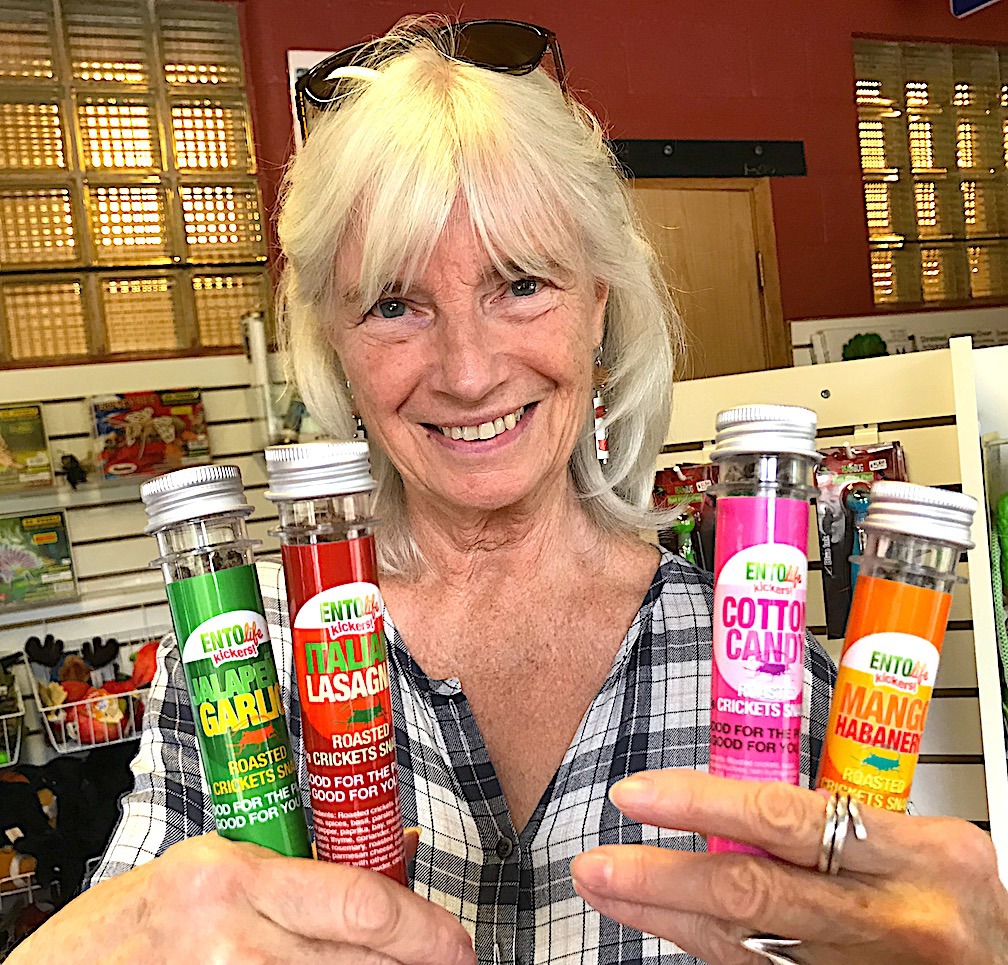
Crickets are a protein source for humans many places around the world. The museum store sells flavored ones. Image by Tom Adkinson
|
Along with insect-themed mugs and refrigerator magnets are tubes of edible crickets (flavors include jalapeno/garlic, lasagna, mango/habanero and cotton candy). Nearby are bottles of insect repellant for the campers – proving that it’s possible to love some insects and hate others.
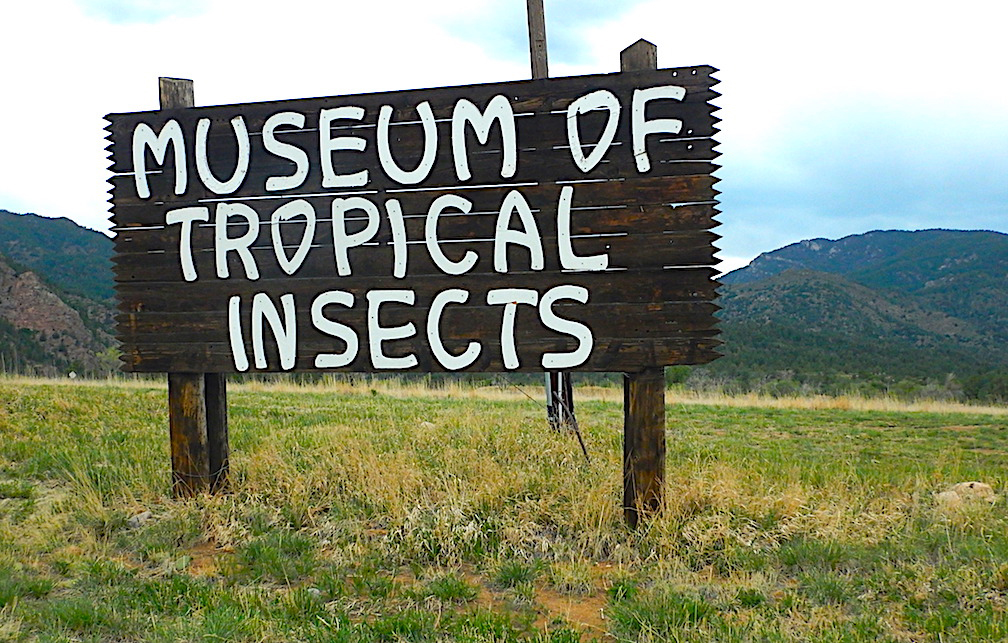
Museum of Tropical Insects once was the formal name, but most people simply call the May collection the Bug Museum. Image by Tom Adkinson
|
Trip-planning resources: ColoradoSpringsBugMuseum.com and Pikes-Peak.com
(Travel writer Tom Adkinson’s book, 100 Things To Do in Nashville Before You Die, is available on Amazon.com.
|

